
That animals knew how to use the sun to guide their large or small movements was the first important acquisition in the field of orientation towards a defined destination (migration and homing).
Felix Santschi, a doctor who moved from Switzerland, operated in Kairouan, Tunisia in the early 1900s. With simple field experiments, he managed to demonstrate that the foraging movements of many of the ants that inhabit those deserts were guided by the sun. The ants did not go towards or away from the sun with a simple taxon movement (approaching or moving away from the source of a stimulus), but with respect to its position they appropriately oriented their route back to the anthill. When a worker returned to the anthill with prey, if her vision of the sun was blocked with a cardboard, she stopped or circled around randomly looking for the lost route.
Much more crucial (and ingenious) was to demonstrate that if the image of the sun was reflected at the same time with a mirror, reversing its position by 180°, the ant reversed its course and went back. Likewise, the ants deviated from the route taken by an angle corresponding to how much the image of the sun was deviated, demonstrating for the first time the use of the sun as an orientation factor. The solar compass was thus discovered and an investigation methodology called the “Santschi mirror”, was introduced and subsequently used in orientation experiments. It was 1913.
Santschi published an organic synthesis of his experiments only in 1923 in a scientific journal of very limited circulation (Fig. 1) and so his results remained effectively unknown.
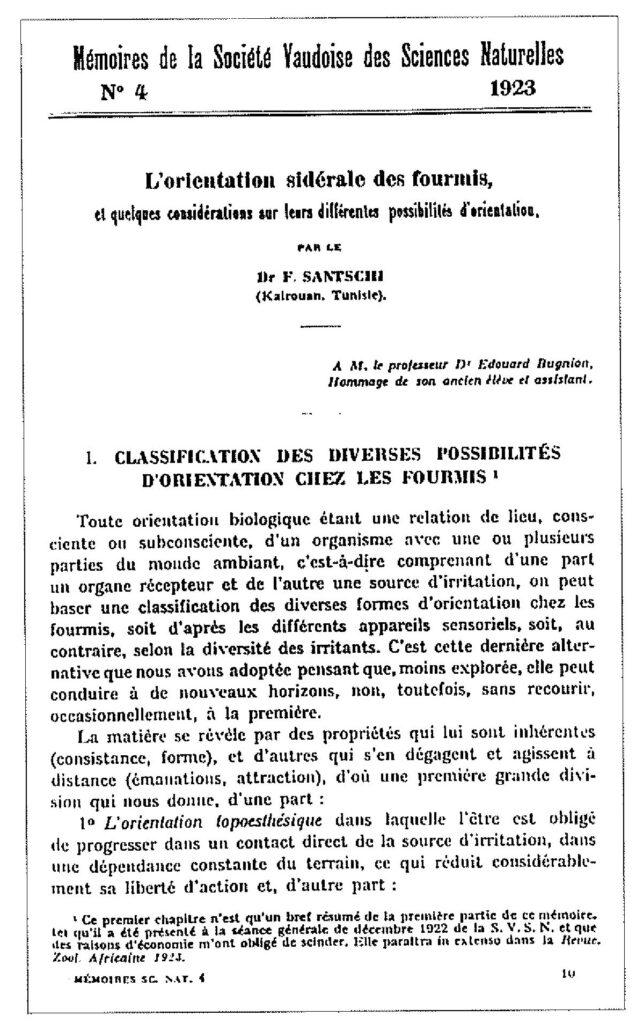
We had to wait until the 1950s, a very fruitful period of research on orientation, in which the use of a solar compass was rediscovered in bees by Karl von Frisch (1949), future Nobel Prize winner, and in birds by Gustav Kramer (1950, see Fig. 2), and Leo Pardi with Floriano Papi identified it in 1952 in crustaceans of the Talitrus genus (Fig. 5). Subsequent experiments of that period clarified what the characteristics of the solar compass were, which at least in birds is learned by young people with the observation of the apparent motion of the star, monitored based on an endogenous “sense of time” synchronized on the moments of dawn and sunset, therefore being chronometric.
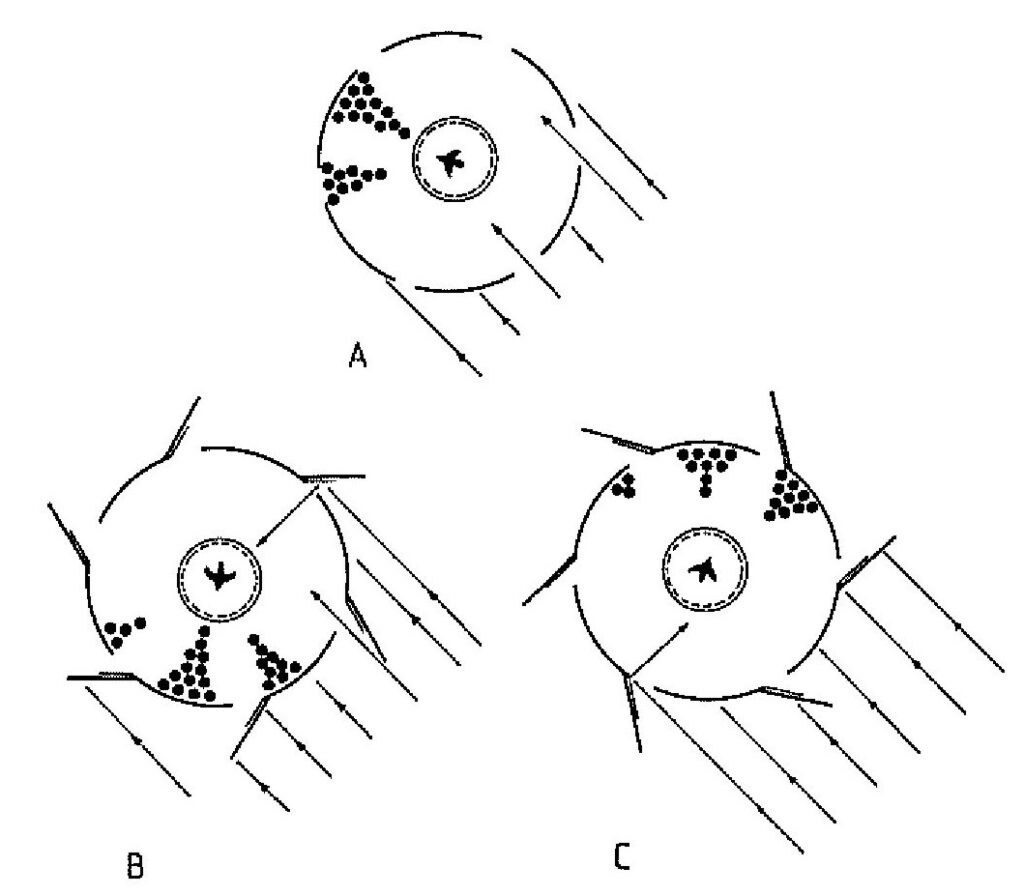
It also appeared clear that animals are not attentive to the actual position of the sun (which they do not take into account) but to the solar azimuth, i.e. the projection of its position onto the horizon plane. During the day it is as if the sun moved for them from east to south and west along the meridian plane passing through the place where the animal is found.
Referring to Figure 3, if an animal intends to go southwest, at six in the morning it will leave the sun to the left at an angle of 135°. At midday the angle with the sun will be 45°, leaving it at 6 pm to the right of -45°. The precision with which a racing pigeon evaluates the angle to maintain with the sun is surprising, varying in a range of ± 3.4° – ± 5.1°, completely sufficient to ensure an excellent re-entry performance. If the sun is hidden and its image diverted with a Santschi mirror, the animal will maintain the same angle with the reflected sun that it would have kept with the temporarily hidden one, heading in the wrong direction compared to what it wanted. Finally, one of the most used methodologies to test the use of a solar compass by an animal is to act on its sense of time, modifying the times in which the animal is exposed to light. Thus, by anticipating dawn by six hours (light from objective midnight to midday), the animal will exchange the six o’clock sun in the east for the one in the south at midday, maintaining an angle of 45° with it, which certainly will not take it where it wanted.
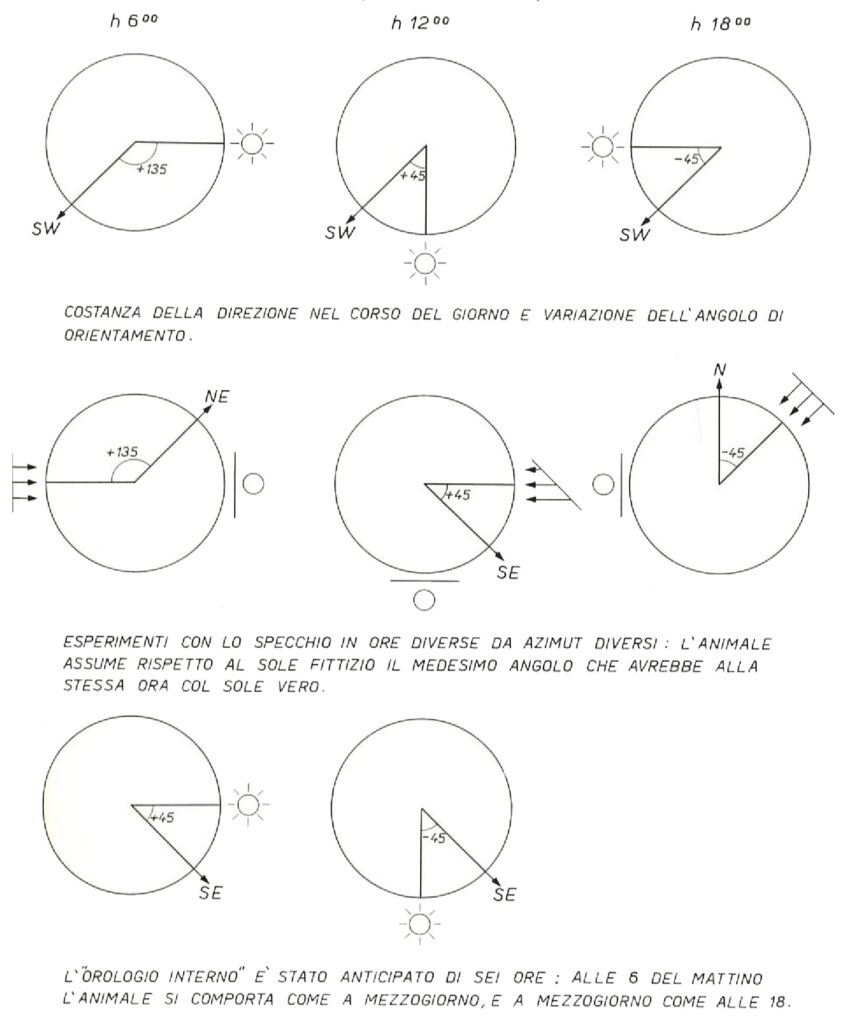
The time shift tests are very simple to do and in 5-6 days the subjects acquire the new light-dark rhythm imposed on them. Just confine them in a well-closed room, so that no light leaks from the outside, giving them artificial light at the times you want, anticipating or delaying the dawn of the desired hours. Each hour of phase shift corresponds to an expected error of 15° compared to non-phase-shifted control individuals.
When the sun is obscured by clouds, the solar compass obviously cannot be used, but in this case the possibility of evaluating the polarization plane of sunlight comes in handy, well developed in insects but also possible for reptiles and birds as far as we know. we know. For these, the blue sky appears with a very complex configuration, since the polarization percentage varies in different parts, determining the “appearance” of two symmetrical half-clouds divided by the solar meridian (Fig. 4). The figure generated by the polarization moves during the day in solidarity with the sun, allowing the solar azimuth to be identified even in the absence of a direct vision of the star. Thus the solar compass can be used immediately after sunset or in the presence of a blue window in the overcast sky.
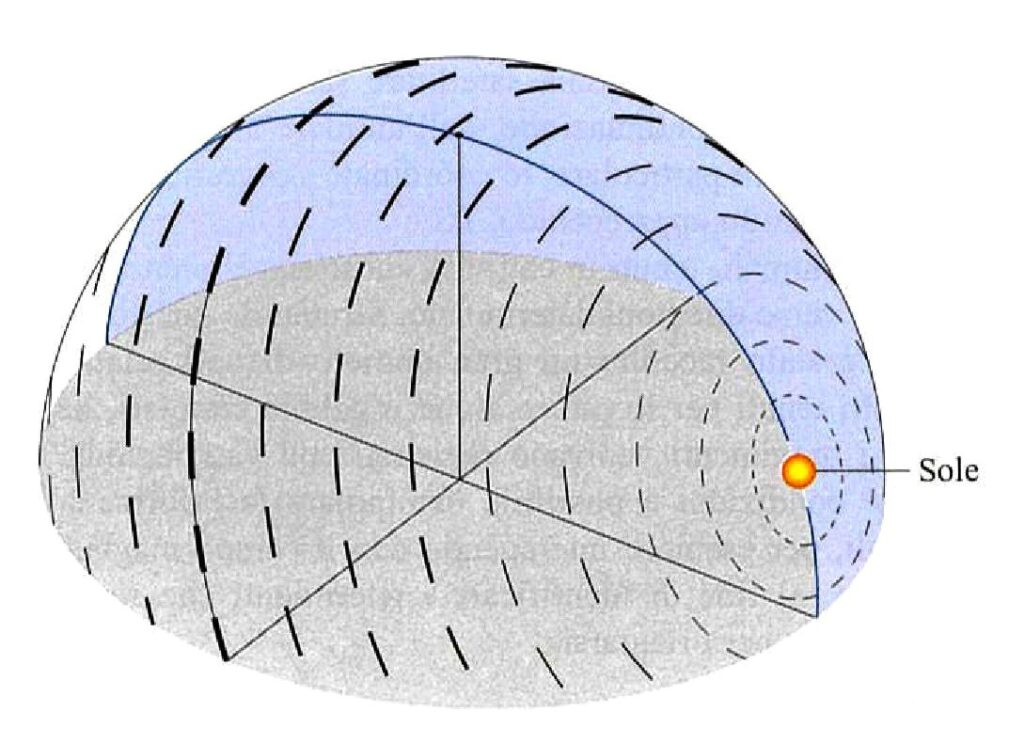
Finally, we must point out that the use of the solar compass can be problematic for a migrant who must cross the equator. In fact, the solar azimuth moves clockwise passing through the south in our hemisphere, but counterclockwise passing through the north on the other side of the globe. In racing pigeons bred in our latitudes but tested in equatorial areas, it was found that the solar compass did not work, although it was capable of being used even beyond the Arctic Circle.
… what about the Moon?
The influence of the moon on the behavior of marine organisms is of primary importance. In fact, by determining tidal movements, the species that live in the so-called “tidal zone” must face periods of prolonged emergence on a daily basis. Rhythms of movement but also reproductive periodicities linked to the phases of the moon are consequently extremely widespread.
An influence of the moon on orientation had, however, long been denied for both marine and terrestrial organisms, until experiments by Pardi and Papi (1953) demonstrated the existence of a lunar compass mechanism for Talitro, shortly after having discovered in the same species the solar one.
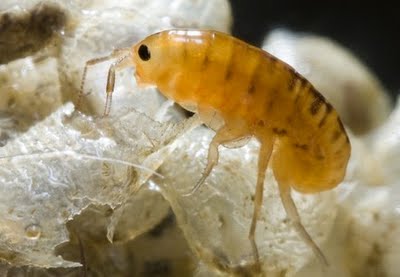
Thalitres are diaphanous little animals (Fig. 5) that dig their nests in the damp sand of the shore, their elective habitat. In search of food, they make both daytime and nocturnal movements inland but, being very sensitive to dehydration, they need to quickly return towards the sea. They do this with a straight trajectory and perpendicular to the shoreline of the stretch of beach where they live (Fig. 6). This direction appears to be genetically determined and specific to the various populations of thalitres, changing with the different trends of the shoreline. During the day they maintain their innate return direction based on the sun, at night they instead have the moon as a reference.
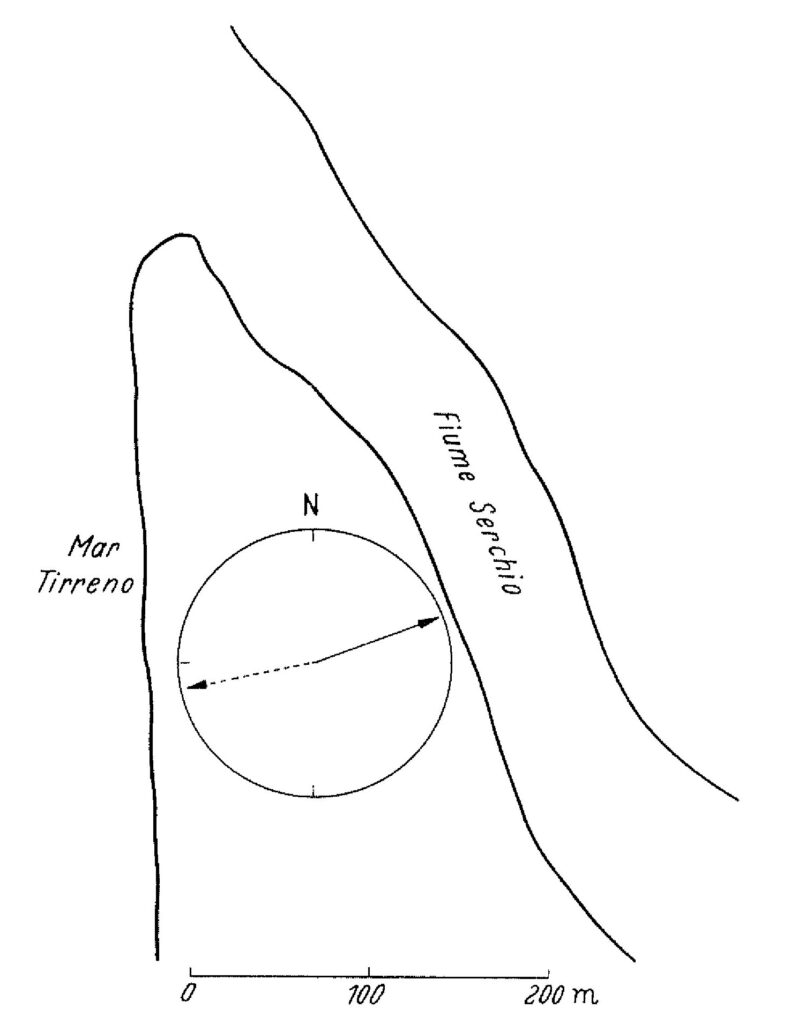
The lunar compass is also chronometric (Fig, 7) and with the moon, the taliters orient themselves in a similar way to what they do with the sun; this mechanism leads a fortiori to the existence of a lunar periodicity of 24 hours 50 minutes. (length of the lunar day) coexisting with that of 24 hours that regulates the solar compass.
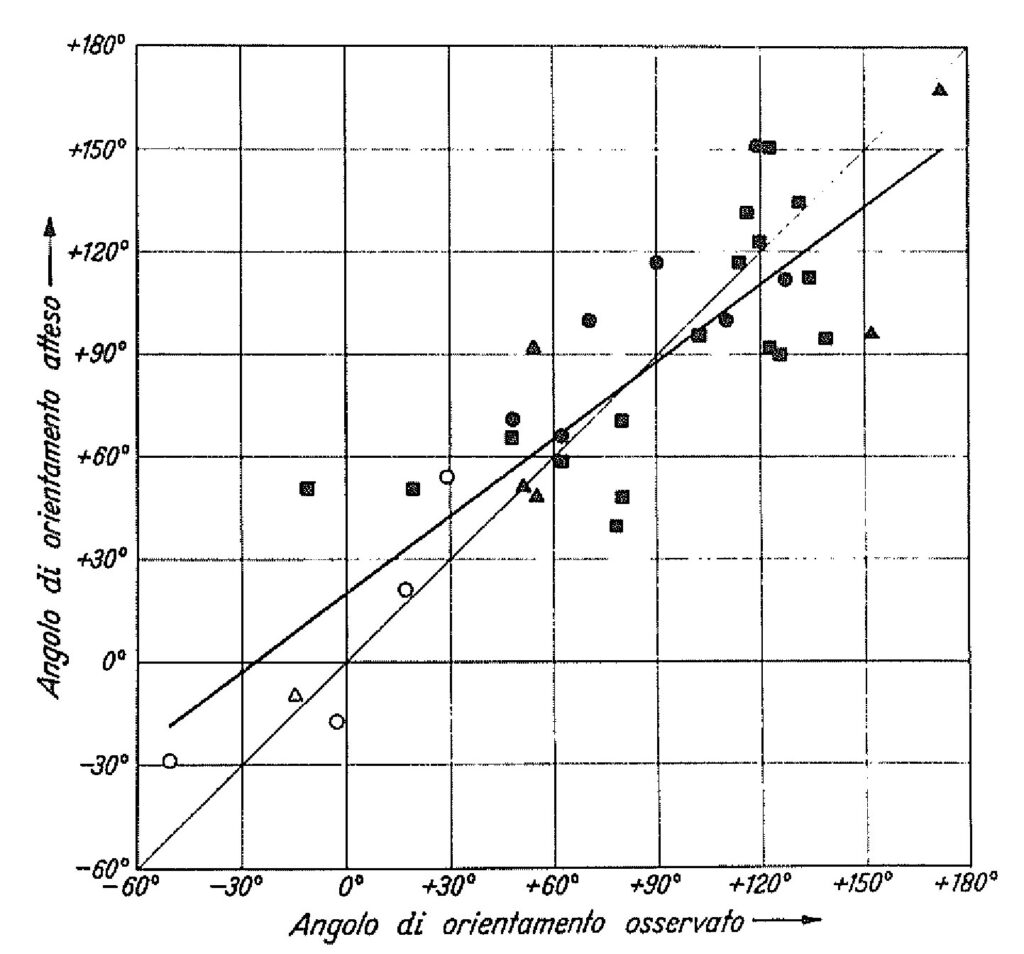
The coexistence of two distinct “senses of time” (lunar and solar) was very difficult to affirm in the scientific community, being openly opposed. On the other hand, from the beginning, the conceptual difficulty of this problem was clearly present to Papi and Pardi, who themselves doubted the existence of a sense of lunar time: “In this case, it seems more difficult to be able to invoke that internal physiological mechanism (sense of time) which we believed to be the foundation of diurnal orientation (Papi and Pardi 1955)”. The chronometric nature of the lunar compass was, however, confirmed by other researchers on American species of thalitres, about ten years later (Enright 1961) and is now fully recognized, demonstrating how even the moon, despite its changing appearance night after night, has a fundamental role for the life of these organisms.
Credits
Author: N. Emilio Baldaccini. Former Professor of Ethology and Conservation of Zoocenotic resources at University of Pisa. Author of over 300 scientific papers on national and international journals. He is active in the field of scientific education, and co-author of academic textbooks of Ethology, General and Systematic Zoology, Comparative Anatomy.
Translation by Maria Antonietta Sessa



